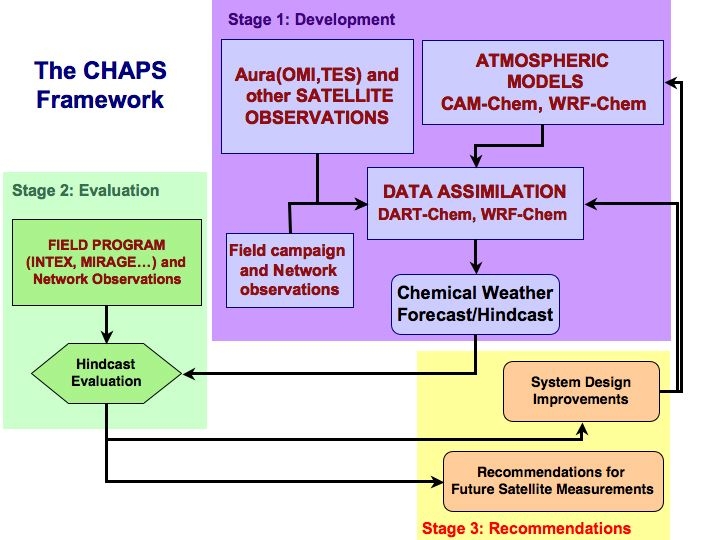
Chemical Weather Forecasting

Chemical Weather: Characterization of the short-term variability in atmospheric chemical composition that results from the dependence on meteorological variability, chemical complexity and regionally and temporally varying sources. [Lawrence et al., 2005]
- The ACRESP Program is developing an air quality “chemical weather” forecasting capability based on existing satellite observations as part of SOSAS.
- The characterization of global and regional scale air quality involves field campaigns, chemical transport modeling, and remote sensing.
- The goal is a scientific and observing framework analogous to that used for weather forecasting with a model assimilation of observations from satellite, aircraft and surface platforms to derive a 4-dimensional view (3 spatial plus temporal) of the physical state of the atmosphere.
- This will be used in air quality basic research: the quantification of emissions of ozone and aerosol precursors and the examination of the long-range transport of pollutants extending from regional to global scales.
- Studies will also examine the connections between climate change and regional air quality, and the roles of anthropogenic and natural processes in changing atmospheric composition.
- The predictive capability will provide a powerful tool to support field campaign activities such as those involving HAIPER chemical instrumentation.
- There also exists the possibility of demonstrating schemes for future operational applications elsewhere in the community related to air quality management and health advisories.